The ceiling cornice is round. Curtain rod: ceiling or wall
The choice between a ceiling and wall cornice for a window is made taking into account the design of the room, convenient maintenance, wall and ceiling material, features architectural forms Houses. It is enough to analyze all the factors for the issue to be resolved on its own.
Influence on the choice of wall and ceiling design
An example to think about might be:
- plasterboard cladding;
- suspended ceilings;
- sandwich panels;
- thickness of the facing coating.
Plasterboard cladding of walls and ceilings creates additional difficulties in attaching the cornice. Heavy curtains, if installed on a wall, will create a significant moment of force, depending on the distance to the wall. In any case, a strong fastening will be required, which is not always possible or advisable to implement.
While the ceiling, even if made in the form suspended structure made of plasterboard, will not require finding additional means to strengthen the connection. As a matter of fact, this is not required. The interaction of gravity and elasticity here occurs in one direction. You only need to install several substrates as a basis for the cornice.
WITH stretch ceilings This number will no longer work. If attachment points have not been created in advance, it is better not to think about using ceiling cornice give up and consider the wall option.
Sandwich panels are also not an example of strength. Therefore, if there is a ceiling on a more solid base, it is better to do the fastening on it.
The recommendations are not exclusive. And sip design can hold firmly wall cornice. Simply, in this case, you should take care of a more durable fastening and opt for lightweight structures.
Formation of room design
The ceiling cornice will always be located higher than the wall cornice. Therefore, its use is preferable in the following cases:
- high curtain hides low ceiling, makes the room spacious;
- hides corner joints rooms, water pipes, window sill boards, high window arrangement;
- Provides tight covering of the entire wall;
- smoothes out the asymmetry of the room.
In the case of high ceilings, ceiling cornices play a lesser role in the design of the room. Wall structures allow you to more fully express the owner’s intentions. In addition, with a height of more than 3 meters, you should think about how to service it all.
Thinking about service
For most women, replacing tall curtains will be an impossible task. And the ordinary process of hanging can turn into difficult task using available tools. An electric curtain rod only partially solves the problem. In addition, it requires secret installation of electrical wiring, which is difficult to do in the conditions of an established way of life that is not designed for the appearance of such devices in life.
Based on this, a choice should be made regarding wall version fastenings It is considered important that the distance from the window to the cornice be at least 15 cm.
It is almost impossible to use window curtains without cornices. Previously, these devices were installed on the wall above the window opening. However, later ceiling curtain rods appeared. They opened up new possibilities for implementation design solutions.
![]()
The term “cornice” itself was borrowed from architecture: it refers to a decorative protrusion above the facade of a building, a door or window opening. Because of the similarity to this architectural element, the fastening console for curtains began to be called a cornice.
Functionality of devices
All curtain rods installed on the ceiling are divided into two types according to the type of curtains used:
- devices for sliding structures;
- analogues for lifting curtains.
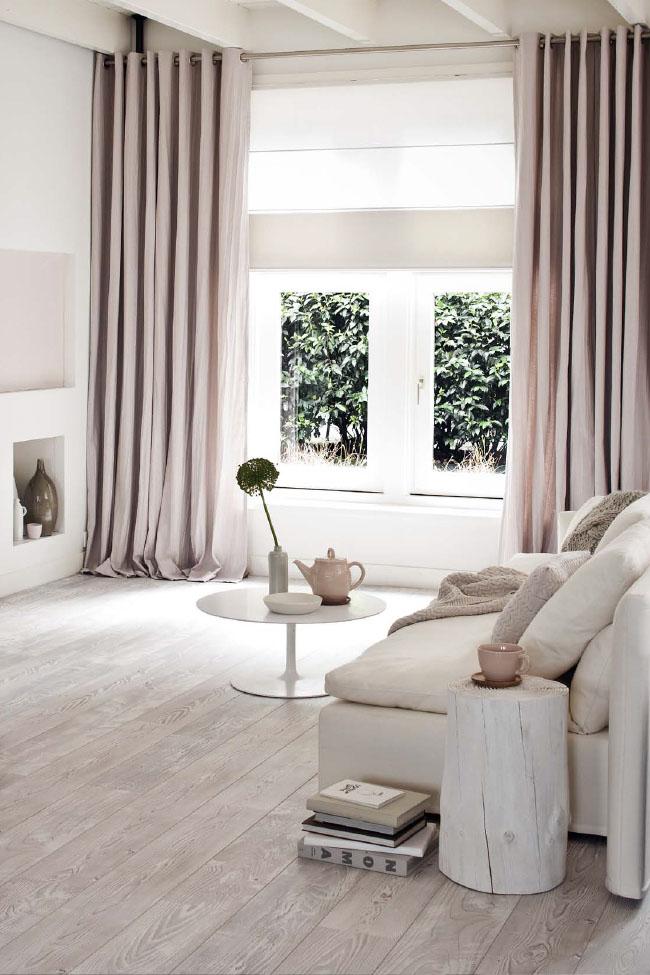
- The first of these categories is very voluminous. It contains many varieties of cornices according to their design, methods of fixation, materials of manufacture and other features.
- The second type is used for “Roman” and “Austrian” curtains, as well as “Marquise” curtains:

- in the Roman design, transverse strips are used, fixed directly to the curtain;
- there are no similar elements in the Austrian analogue. Only occasionally is the bar attached to the bottom of the curtain;

- The Marquise system is pleated curtains similar to theater curtains.
Cornices can have one-, two- and three-row fastenings for panels.

They serve for the corresponding number of curtains:
- in the first case, the main curtain is used;
- in the second - the main curtain and tulle;
- in the third - the main curtain, tulle and lambrequin.
What problems do curtain rods solve?

- By choosing the height of the structure, you can optically solve the problem of low walls, since the room will look higher. In addition, you can forget about the question of how to fix a wall cornice to a high window opening in a low room.

- Curtains with long holders covering the entire wall can mask minor defects its lining.
- Ceiling curtains can also insulate a room. In areas with a cold climate, panels that tightly cover the window opening will play the role of a kind of heat insulator.
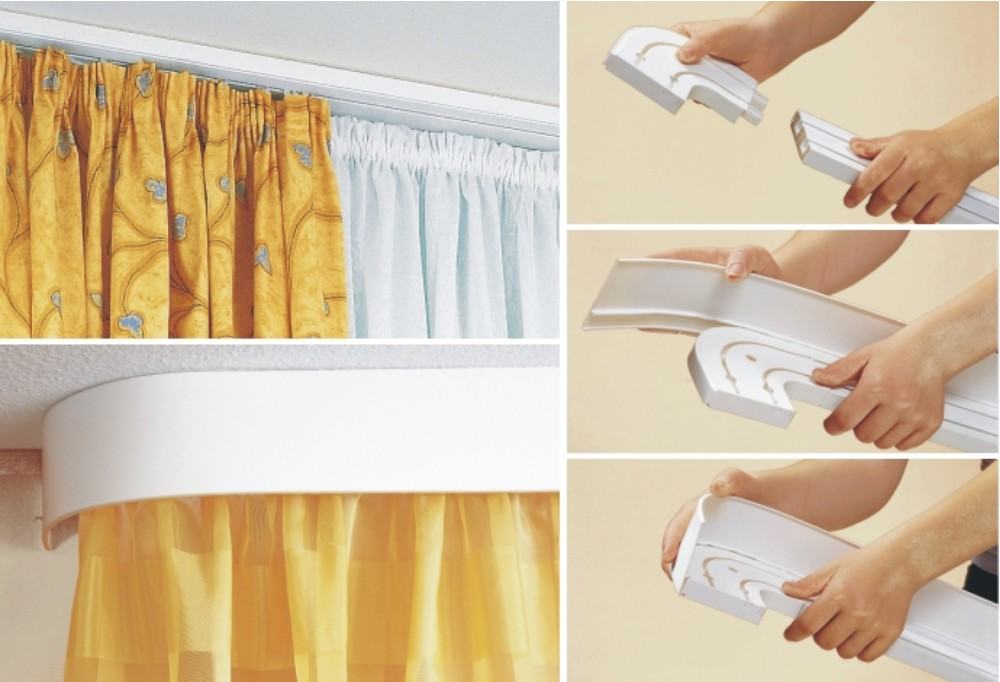
The photo shows a design with arched tips.
If you use a design with arched tips, you can completely close the passage to cold air coming from the windows into the room.
- In summer, the need to insulate the room disappears. However, the curtains continue to perform their main function. That is, they darken the room and to some extent prevent heat from penetrating into it.
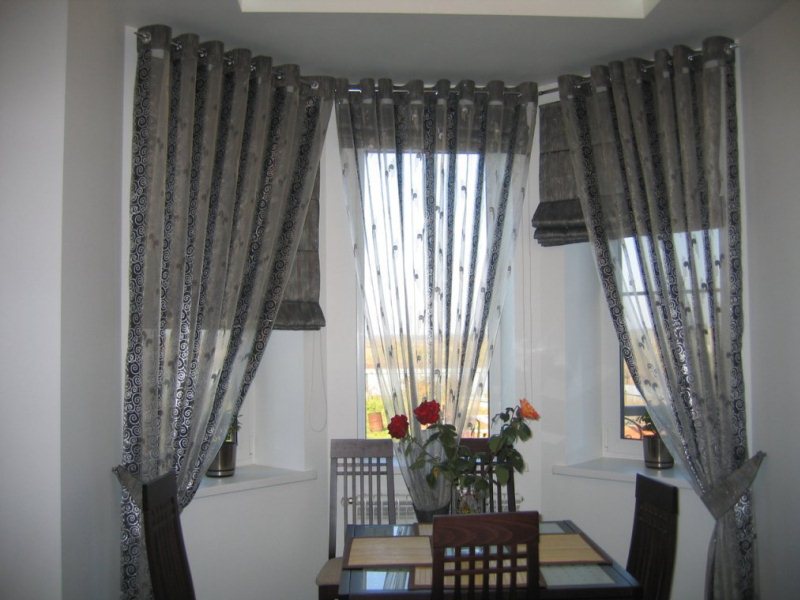
When such a need arises on a bright and hot summer day, a tightly fitting panel suspended from the console will create a darkening effect in the room.

A ceiling cornice for curtains can either play a purely functional role or additionally serve as a decorative detail of the room:
- In the first case, everything is extremely simple - there is a structure for fixing the curtains and there is nothing more to worry about.

- The situation is different with decorative devices. They have design features, which hide work items.

If you want to choose a decorative console for curtains, then you will need to think about the design of the strip that masks the functional part of the device. In this case, you will need to pay attention to the design of the curtains. In addition, take into account overall design rooms.
Materials for making cornices
The standard length of ceiling consoles for curtains of any type is from 150 centimeters to 400. Before purchasing them, measure the window openings to know exactly what size curtain rods to buy.

At the same time, take into account that the ends of the console, when installing it, must protrude beyond the edges of the opening at a distance of at least 30 centimeters. When it is impossible to take measurements, purchase a design with a reserve length. You can then cut the cornice into place with a hacksaw.
So, what types of ceiling cornices exist based on material?
Wood products

Curtain rods made of wood are traditional, they have been used for several hundred years:
- Such consoles are very aesthetically pleasing, just like their counterparts from any natural material.
- In addition, they are durable and reliable. Therefore, they can serve you for many years.

- Wooden cornices can fit into any interior style - both classic and modern.
- Consoles for ceiling curtains are manufactured by manufacturers from the most different varieties wood Specifications and their prices can vary significantly. Most often used coniferous varieties- spruce, pine, as well as deciduous trees - beech, oak, ash, etc.
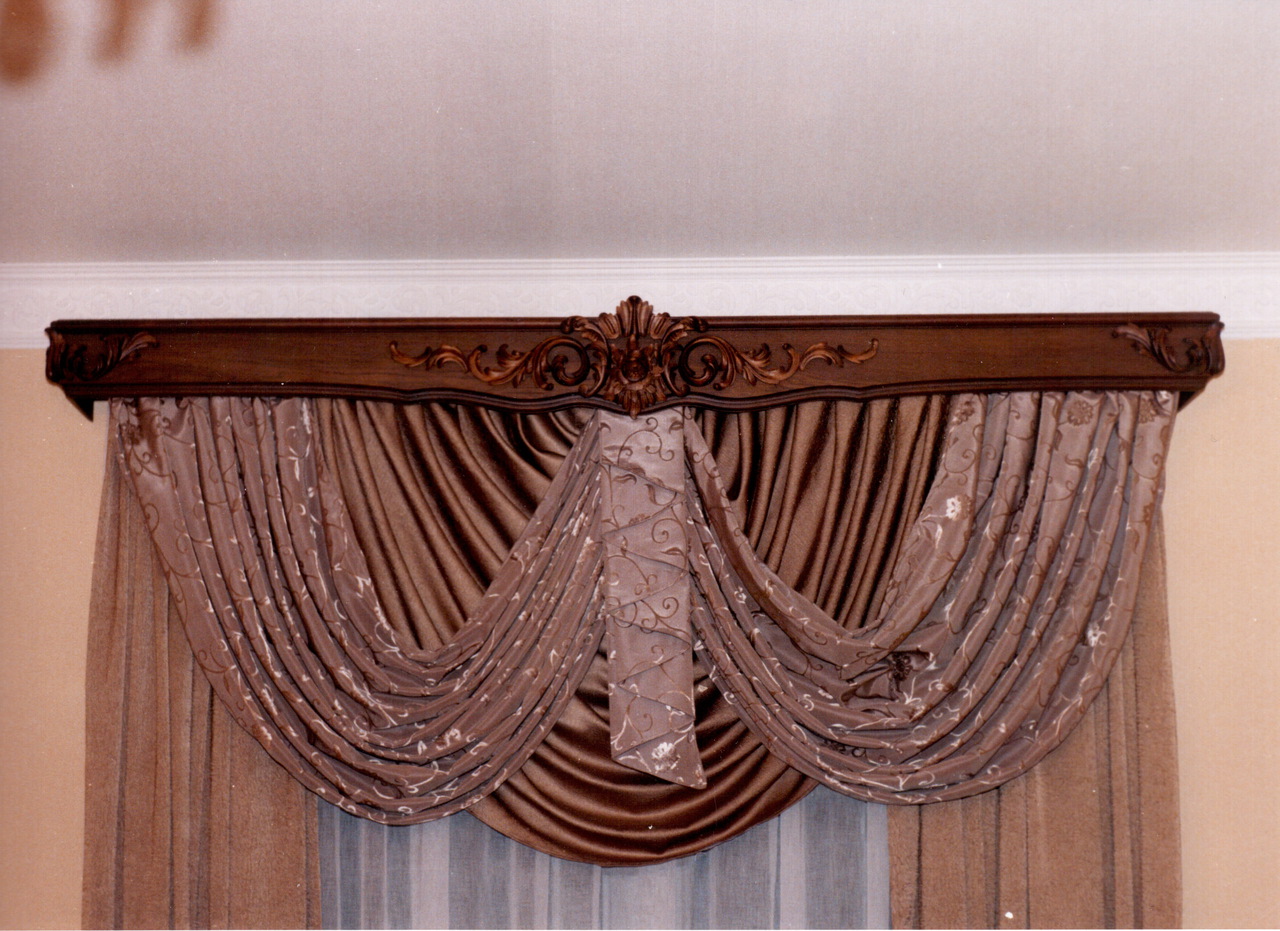
For expensive models consoles apply valuable species wood - cherry, walnut, larch, cedar, etc. Elite cornices, which have a very high cost, can be made from exotic and rare species - wenge, mahogany and ebony, sandalwood, etc.
Wood is perfectly processed, so consoles made from it can have a variety of designs. With sufficient skill, it can become a unique work of applied art.
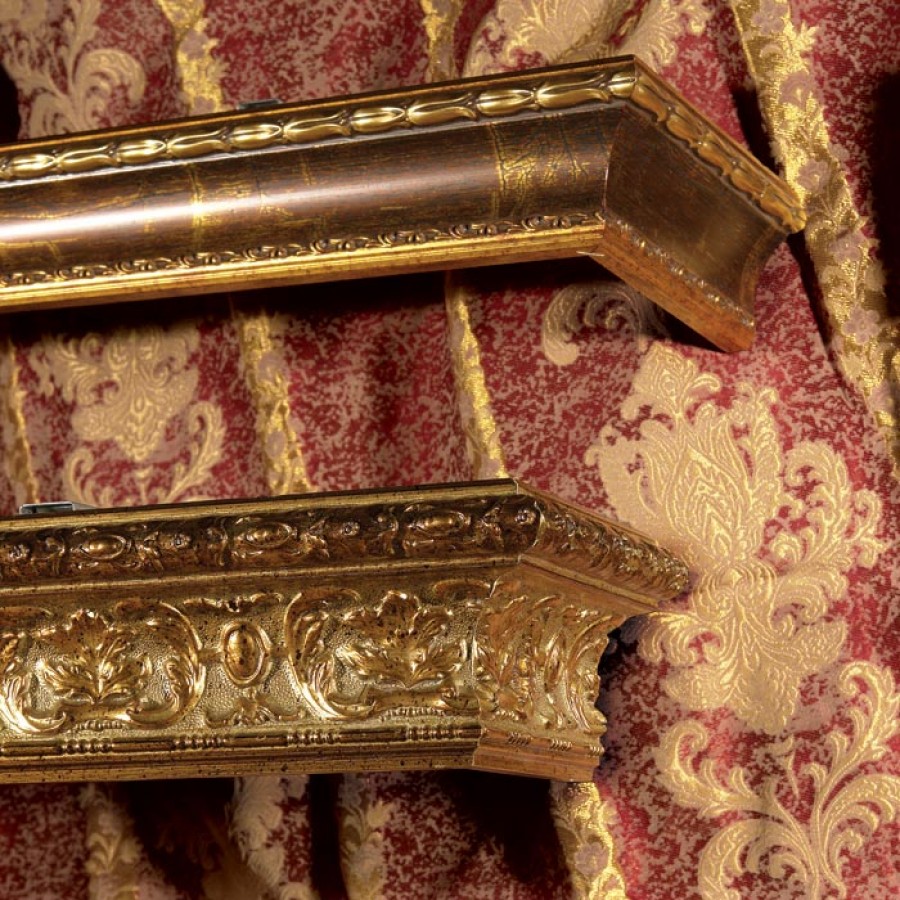
Ceiling curtain rods made of solid wood are most often varnished, painted, and also decorated with carvings. Like others natural materials, wood is not that little, but all good things have never been cheap.
Metal structures

- Metal curtain rods are made from aluminum, stainless steel, bronze, brass, and copper.
- Such products are extremely durable and reliable. On metal structures You can attach the most massive panels, which is why they are used for theater stages.

- Metal consoles are most suitable for modern styles decoration of premises, for example, hi-tech, techno, postmodern, loft, minimalism, etc. However, nothing prevents them from being used in classic as well as retro.

Among metal structures, pay attention to aluminum analogues. They are lightweight, inexpensive, quite durable and do not corrode. Such cornices are quite durable and easy to maintain. You can simply wipe them periodically with your own hands with a damp cloth.
Plastic devices

Curtain consoles made of plastic are the most inexpensive of all analogues. However, this does not mean that such products are of poor quality. The cheapness of plastic does not affect the functionality of the console design.
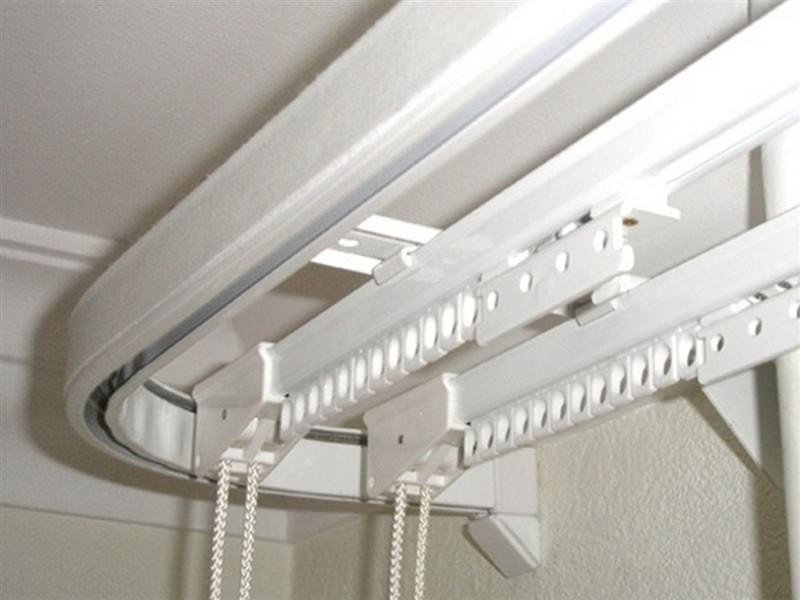
You can’t say that such cornices have exceptional aesthetics and decorativeness. However, they are usually colored white, which is neutral and suitable for almost any window design, as well as general design interior
Of course, consoles made of wood and metal look more respectable, but this is just a matter of savings and pricing decisions:
- By the way, when thinking about which cornice is better, ceiling or wall, remember that plastic consoles of these types cost the same - from 200 rubles. and higher.

- The ends of such cornices are made rounded towards the wall or straightened. Arc-shaped rotary elements cost from 150 rubles. for a couple.
- For a direct console you will need plugs, they cost from 10 rubles. per product.
Types of consoles by design and purpose
I'll tell you a little about cornices for different types curtains
Consoles for lifting curtains

- Typically, such a cornice is a strip made of metal or plastic, which is equipped with a lifting device. The curtain is motionless and firmly fixed to the rail.
- The lift cord is attached through the sides of the panel in its lower plane.

- It is with the help of the cord that you can lower or raise the curtain.
- The bar itself is fixed to the ceiling or to the wall above the window opening. In the latter case, brackets are used for fastening.

- The length of the bar of this reliable and simple design can range from 40 centimeters to 250.

Consoles for lifting curtains can be straight and rigid or arched and flexible. In the latter case, the structure is capable of bending only in one plane, but in different radii. The height of the curtains at such a cornice is limited by the lower arched edges.
This console is almost always painted white. This is explained by the fact that it is almost always hidden from view.

The curtain rod is hidden directly by the curtain panel, which is fixed to it using Velcro. In some cases, the area where the curtain is attached is masked with a baguette or decor in the form of a ribbon.
Console models for Roman curtains are always single-row. In this case, when it is necessary to fasten two or three curtains, a corresponding number of individual curtain rods are mounted on the ceiling.
Analogues for sliding panels
The following types of consoles for sliding curtains are known:
- profile, also known as rail or tire;
- rod, also known as tubular;
- string
Profile structures
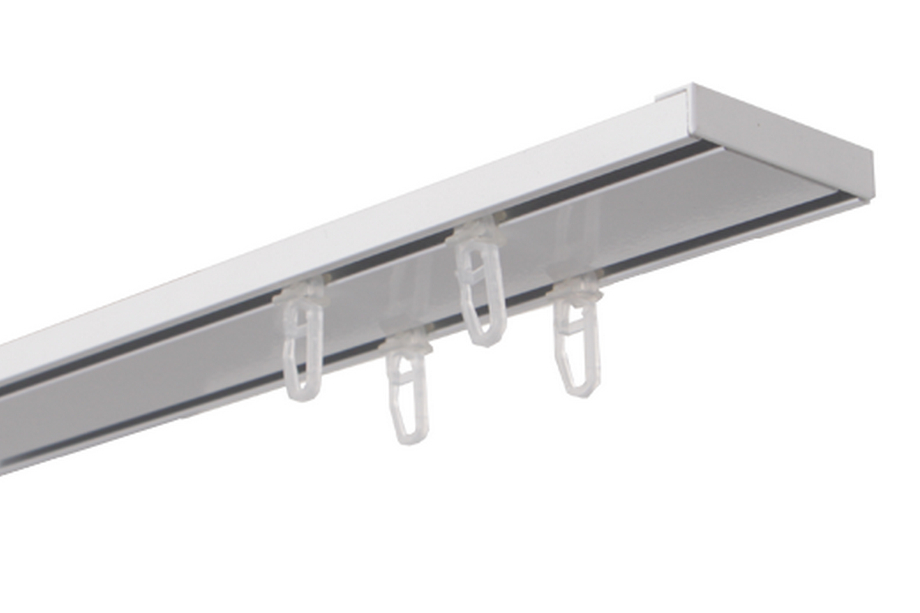
These curtain rods are the most common:
- The curtains are moved here using sliding hooks in the shape of the letter “T” or special rollers.
- Movement occurs along a profiled guide bar, as if on a tire or rail. Therefore, such consoles are additionally called rail or bus consoles.
- Profile devices are fixed directly to the ceiling.
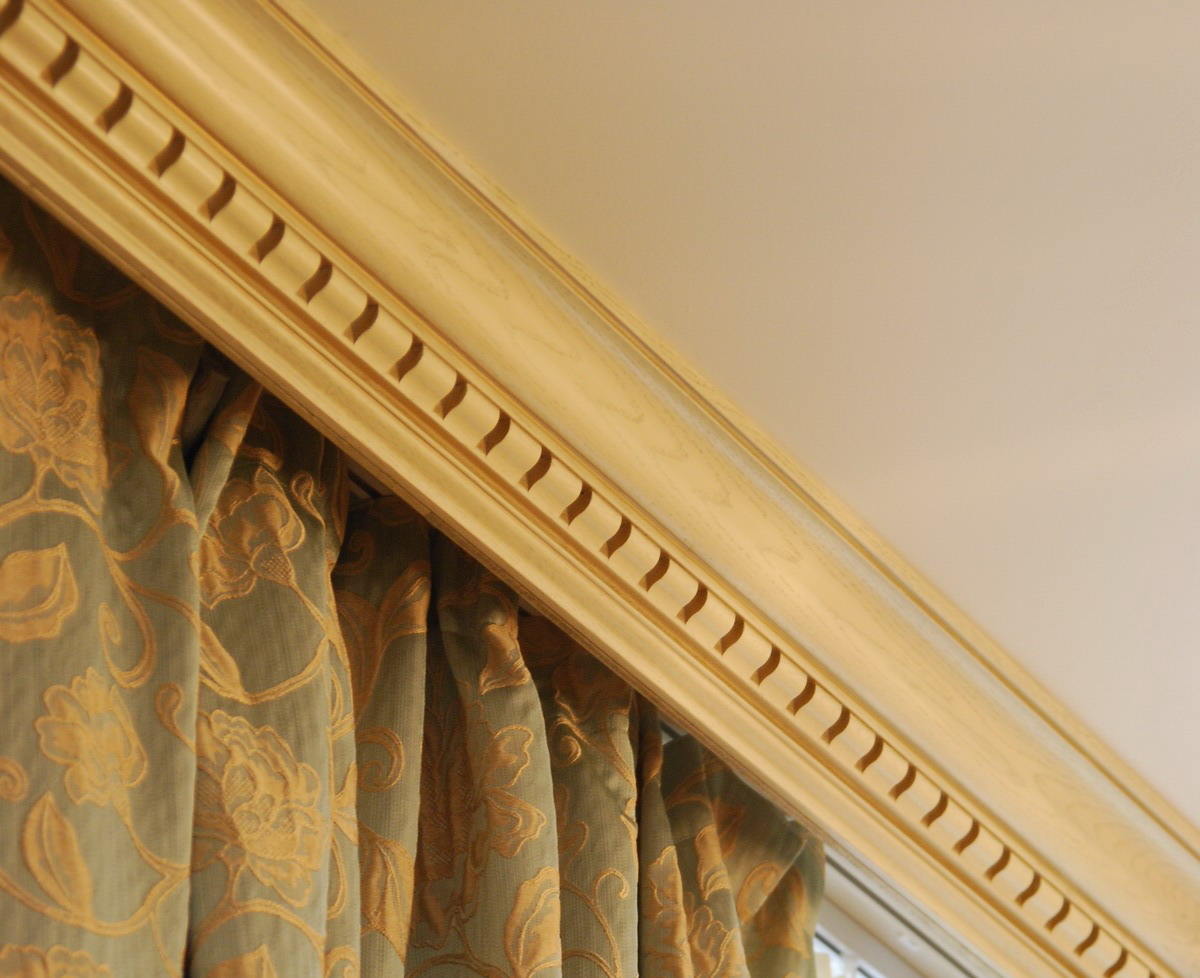
- The working part of the cornice is usually masked with a baguette or tape. When the console is mounted in the recess of a tiered ceiling, decorative details are not installed.
When considering which cornice to choose, keep in mind that profile analogues are reliable and easy to use. They are able to hold a lot of any curtains: heavy, medium and light.
Most often, such consoles are made of plastic. Much less often, manufacturers produce metal profile strips.

I'll voice some important features plastic profile structures.
- Extendable size by joining two planks.
If necessary, the length of the cornice can be made exactly as you need it. I assure you that the movement of the roller in the area where the two slats meet will be problem-free.Options for flexible curtain rods.
- In addition to rigid models, manufacturers also produce flexible profile cornices. Such consoles follow all the curves figured ceiling without interfering with the movement of the curtain.
There are 2 types of flexible consoles: horizontal and vertical analogues. The latter frame the arches; multi-row models of them are available for sale. Horizontal structures can only be single-row.
String cornices

How load-bearing element Thin steel strings are used for panels here. The string is fixed at both ends with brackets and tensioned using a threaded device. This type of ceiling curtain consoles is the cheapest of all analogues.
The strings are not able to hold heavy and dense curtains, only light and medium ones. Over time they sag, so they have to be tightened regularly. However, string consoles do not clutter up the space.

Manufacturers produce two- and single-row models of similar designs. In this case, the working part of the cornice can be masked with decorative tape or baguette.
Rod analogues

Often people call such a console a curtain. However, my instructions warn that this is incorrect.
A curtain is a light curtain that completely covers the window.
Based on this, if you supposedly need ceiling curtains, what you really need is a rod curtain rod for these same curtains.
- Moving the fasteners to this type Consoles are made using a guide element, which is a long rounded rod.
- The curtains are fixed to the guide with rings. They glide smoothly over the surface of the pipe.

- To prevent the curtains from flying off, their mobility is controlled by decorative stops at the ends of the rod.
- The maximum length of the cantilever pipe can be 4 m. In this case, intermediate fastening is required. The curtains cannot move in this area.
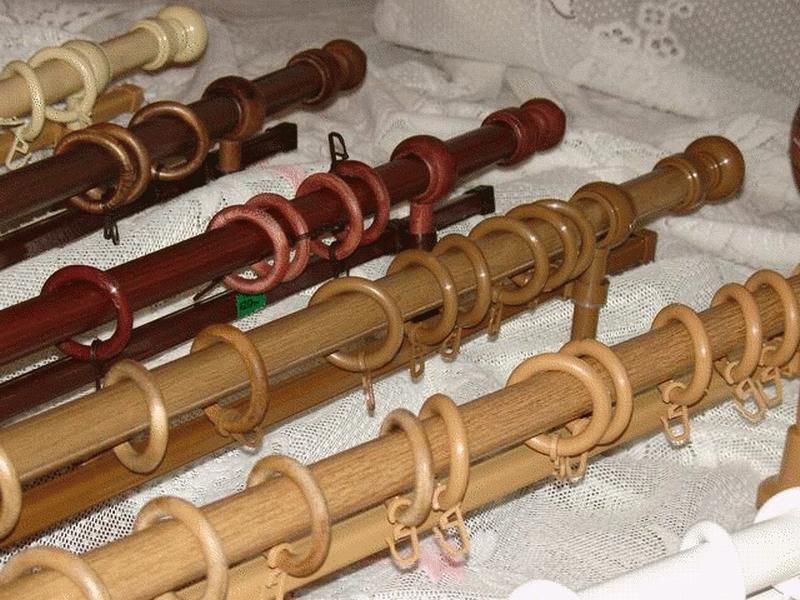
The material used to make rods in most cases is metal: brass, steel, bronze, aluminum. Sometimes you come across metal-plastic or wooden products.
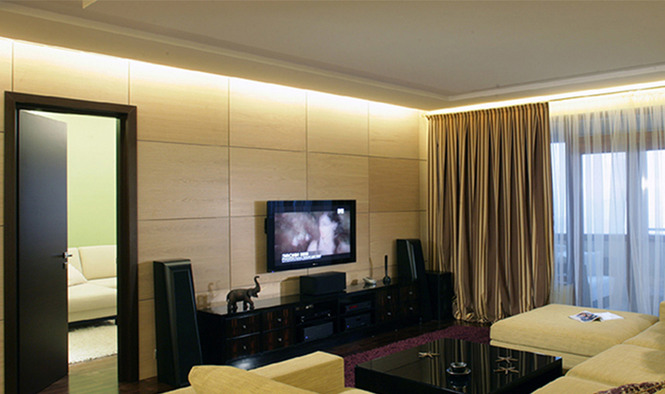
Conclusion
The video in this article will confirm this statement. Share in the comments which cornice you chose” width=”640″ height=”360″ frameborder=”0″ allowfullscreen=”allowfullscreen”>
Conclusion
Cornices installed on the ceiling make it possible to use different types curtains On at the moment There are several types of such consoles and a huge variety of different models. You can always choose exactly the device that is needed for your case.
The video in this article will confirm this statement. Share in the comments which cornice did you choose?
Still, I repeat - you will still put on what your heart lies most in. As for ceiling cornices: they come in plastic and aluminum; the company that manufactures the cornices told me that there are far fewer problems with metal. And yet, for me personally, after the ordeal with, perhaps, not the most successful design of the ceiling cornice, the memories of curtains gathering in a bunch and not wanting to slide bring everything to naught decorative possibilities such cornices. Moreover, at the joints (the joint was in the middle, since one curtain rod was simply not enough to cover the entire width of the room), curtains almost always got stuck, but what bothered me the most was local “clustering”, when a group of hooks was located at an angle critical for the cornice and prevented each other from moving. But in the end, you don’t have to drag the curtain by the bottom, but move it with a special cane, and now the hooks are probably made with some kind of round base, so that when the curtain is pulled back sharply, they don’t interfere with each other. Just carefully study all the components of the cornice before purchasing to be sure that the problems I described should not arise, since I still remember a rather unsuccessful cornice, perhaps they are now being made taking into account old problems.
As for cornices with rings, there are brackets for them that can be mounted both on the wall and on the ceiling. I have just these, although they are attached to the wall. They are a wooden cylinder with a kind of tablet at the base, in which through holes are made round holes for threading a cornice through them. I don’t remember now how the cornice itself was attached, but with such a wraparound design of the bracket, even if this tablet has to be strengthened somehow, there is not the slightest obstacle to attaching such a bracket to the ceiling and not to the wall. These cornices are made to order, the length and number of brackets is determined by the customer. I also really like curtain rings made from the same wood and finials for curtain rods - there are several types of them, I chose balls (from the same wood, of course).
And a few more words in defense of blinds, even though you don’t like them. I am a fan of blinds, I have them on all the windows, despite the presence of curtains in one room. For windows facing sunny side, I think the blinds are absolutely necessary part window decoration is about functionality, but at the same time, don’t be surprised, I find them incredibly cozy and beautiful: on a sunny day, all the walls of the apartment are covered with a mesh of sunny stripes, which I always associate with relaxation, the sea, travel, and in cloudy weather or in the evening their smooth, semicircular slats reflect the light coming from the room, and the sparkle of these stripes between the frames gives me a feeling of celebration. Forgive me for this lyrical digression, I’m not trying to convince anyone, I just want people to know about another way of looking at blinds...
